Chrome: Come installare certificati SSL auto-firmati
Spesso, durante lo sviluppo di un sito web sulla nostra macchina locale (localhost) o sul nostro server privato remoto, non abbiamo a disposizione un certificato SSL rilasciato da un’entità di certificazione attendibile, e procediamo configurando il webserver con un certificato auto-firmato (self-signed).
In questo caso, mentre browser come Firefox consentono di aggiungere un’eccezione, anche permanente, per il sito in questione, l’apertura del sito web in Chrome produrrà ogni volta un avviso di questo tipo (NET::ERR_CERT_AUTHORITY_INVALID):
Questo avviso, oltretutto, farà sì che voi non possiate salvare i dati di login del sito in questione, in quanto Chrome non salva le informazioni sui moduli dei siti in HTTPS non sicuri.
Per risolvere il problema, è necessario effettuare un’operazione molto semplice: esportare il certificato SSL del sito nel formato opportuno ed installarlo come certificato attendibile.
Per esportare il certificato SSL ci serviremo proprio di Google Chrome.
Aprite Chrome e visitate il vostro sito. Riceverete l’avviso di cui sopra, cliccate su “AVANZATE” e quindi su “Procedi su <domain name> (non sicuro)”.
A questo punto, apriamo gli Strumenti per sviluppatore di Chrome premendo il tasto F12 e andiamo nella scheda “Security“.
Clicchiamo “View certificate“, andiamo nella scheda “Dettagli” e clicchiamo “Copia su file…”.
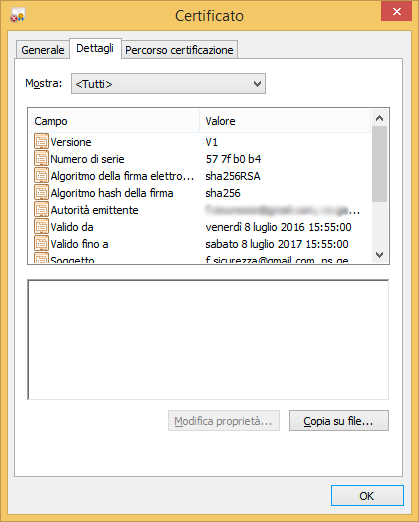
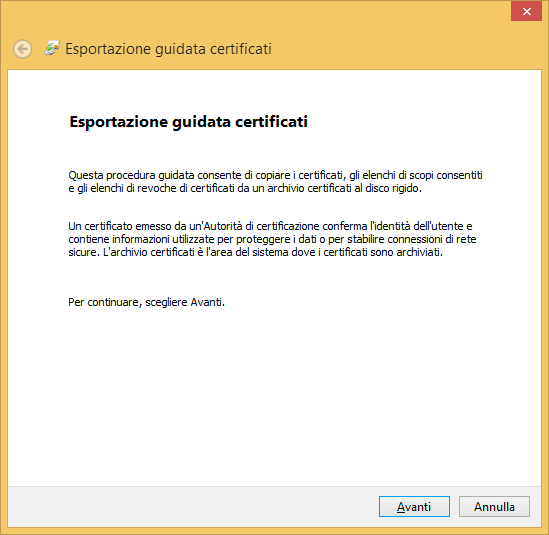
Clicchiamo “Avanti” e selezioniamo “Standard di sintassi dei messaggi crittografati – Certificati PKCS #7 (.P7B)“, quindi ancora “Avanti”.
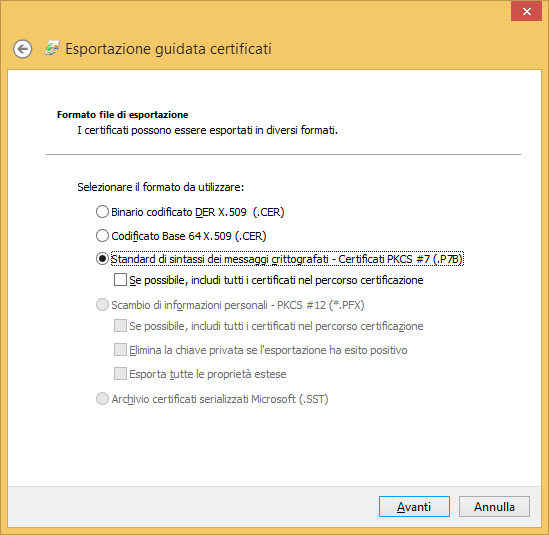
Clicchiamo “Sfoglia…” e salviamo il certificato sul nostro PC (ad es. sul Desktop) cliccando “Avanti”.
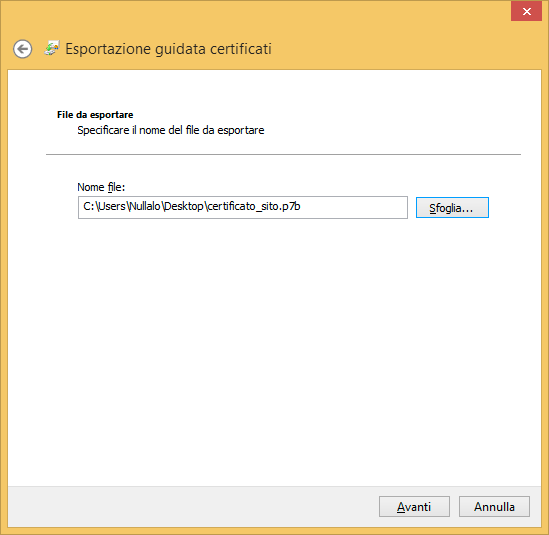
Infine, clicchiamo “Fine”.
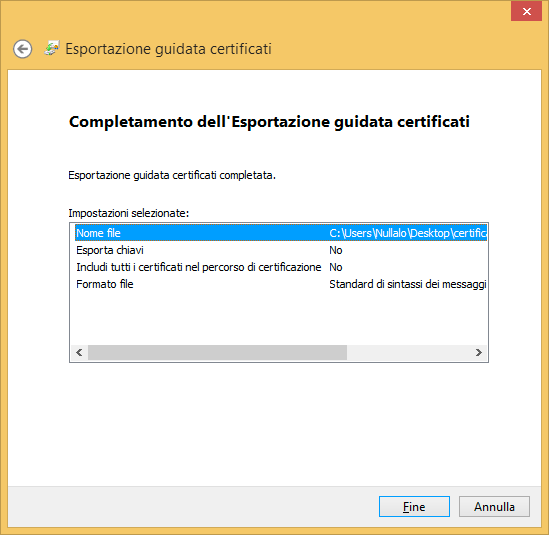
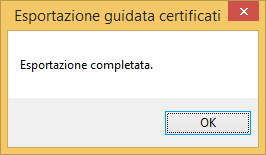
Nella prossima pagina vedremo come importare il certificato.




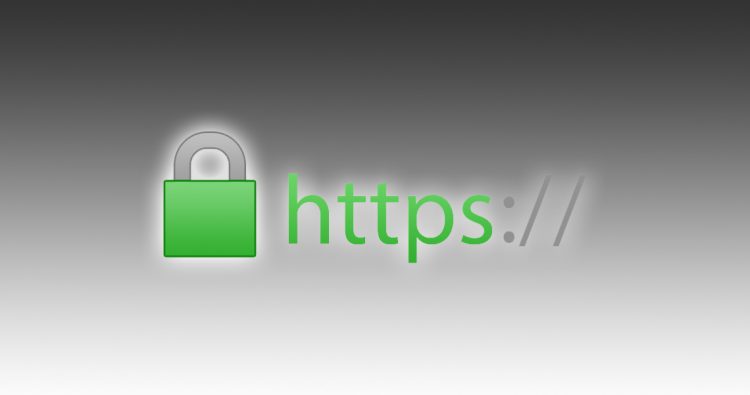
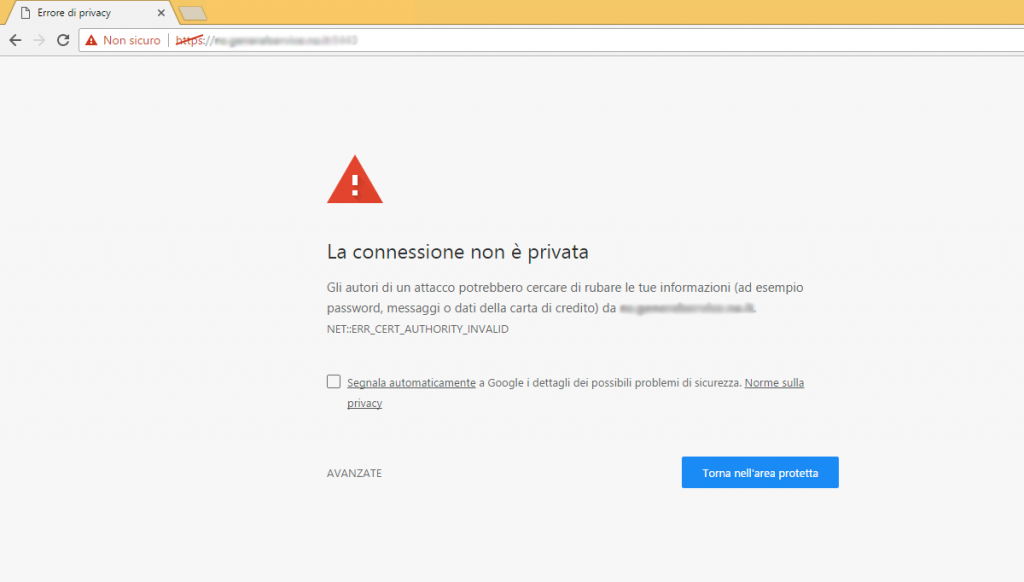
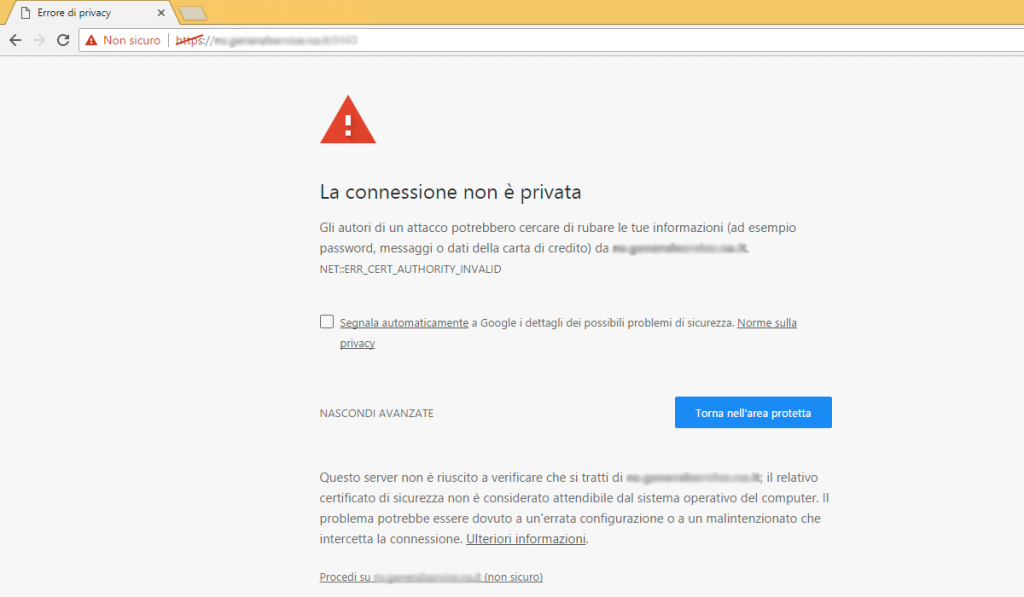





9 Commenti
Thank you so much for this – very helpful!!
“Click on “View certificate“, go to “Details” tab and click on “Copy to File…”.”
– No such option on macOS
Hi Nathan,
for MacOS, after clicking “View certificate”, select the certificate (last node of the tree located in the upper part of the window) and simply drag the large certificate icon (the one to the left of “Issued by” and “Expires” words) and drop it to your desktop or in any Finder window.
After that, you can import the saved certificate by double-clicking it.
didnt work
Did you read this article as well?
Okay this works.
I wonder, if this worked because I used chrome setting to install the server certificate?
When I tried installing server certificate using MMC certificate snap-in chrome ignored it and kept on displaying certificate invalid.
Now that your way worked I’ve deleted the server certificate using MMC certificate snap-in chrome still opens up the site in GREEN color.
Chrome is definately storing some information on its own storage just don’t know where that is…
Once the procedure in this article is followed, will the site security show as green for all visitors?
Hi Ben, since we’re talking about LOCAL development it will show as green just for you.
For a public website, you need a trusted authority certificate (e.g., you could use a Let’s Encrypt certificate), issued for your website’s domain (e.g. mywebsite.com).
Hello… I have the same problem. I followed your instructions and the procedure is done smoothly but sad to say it did not work. I still getting an error message and still in red lock on my https.